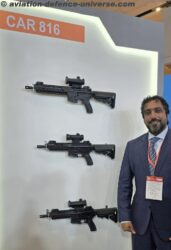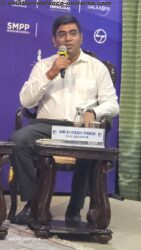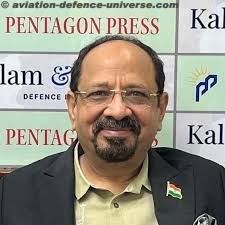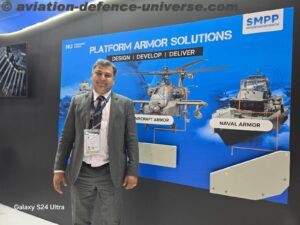New Delhi. October. “The eyes of the entire world are now on countries like India, and partners like Samtel which offer world-class quality at competitive costs. Also, with big ticket defence purchases by India on the cards, the global firms are looking at competent players like Samtel Avionics to fulfill their offset obligations. The new Defence Production Policy is also intended to support Indian Industry to build their in-house capabilities in order to meet the future defence requirements. In order to absorb these offset requirements, we are definitely one of the strongest contenders since we have the capability to deliver high-quality products and in a short time period,”said Puneet Kaura, Managing Director & CEO of Samtel in an exclusive interview to Aviation & DefenceUniverse(ADU).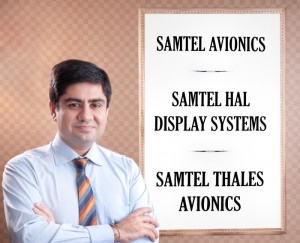
ADU.From Executive Director to Managing Director & CEO of Samtel, how has the journey been?
PK. It’s been an interesting journey so far. Samtel Avionics, despite being comparatively young in the industry, has made rapid progress, and it is indeed a privilege to lead such a fast track organization. Even as an Executive Director, I was involved in almost all the facets of running the organization, but had a focus mainly on business development. Subsequent to becoming the MD & CEO, my involvement has become more intrinsic and intricate. While business development and organizational growth still forms a large part of my KRA, I have my fingers deep into the other aspects of running the organization as well – be it HR, IT or operations. One of the first things I did after becoming the MD is strengthen my team and bring in more professionals in leadership roles, thus reinforcing the various pillars of this organization.
ADU.With Prime Minister Modi’s Make in India taking centre stage, where and how do you see yourself matching steps with it?
PK. The new Modi government has an enhanced focus on the Indian defence requirements and is taking elaborate steps to simplify the policy framework, as well as build-in provisions that go towards supporting the Indian manufacturer. Added to this, the ‘Make in India’ campaign is specially formulated to act as a strong mandate to foreign players to develop manufacturing units in India.
The Indian defence industry has grown over the years has a continuing focus on self-reliance. The proposed reforms are intended to encourage the private sector to make further inroads into the defence domain. Such measures help create a lot of vibrancy in the country’s defence sector by increasing the possibilities of local production.
Through PM Modi’s Make in India campaign, the government is stressing upon Indian companies to have local, indigenous firms scale up their operations for the international market.Samtel has already been a part of the global supply chain of international players such as Honeywell and Curtiss Wright, and has been exporting to them for years. With the push from the government to further increase the participation in the global defence supply chain, companies like Samtel will get the impetus to step up their scale of participation.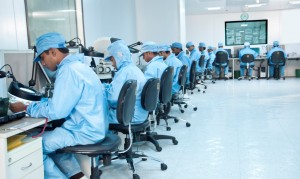
ADU.What is the status of your JV with Thales? Recently, the Thales CEO had mentioned that the Samtel-Thales JV will be participating in the Mirage 2000 upgrade programme. Can you elaborate?
PK. The Samtel Thales JV was signed in 2008 with an aim to bring Thales’s technological expertise to India as part of Thales’s strategy of partnering with leading industry players around the world. The JV specialises in the design, development, production, sale and support of aeronautical products for the Indian defence markets. Thales’s expertise and know-how in this area will allow the joint venture to complete its objective of becoming a key private player offering Thales’s ‘made in India’ products.
As mentioned by Thales CEO recently, the Samtel-Thales JV is partnering with Thales on the Mirage 2000 upgrade project. The JV has already started dispatching the displays for Mirage 2000 from its production facility in Delhi/NCR. Besides this, the JV will create offsets in the avionics and optronics fields as well as redesign and the treatment of obsolete materials, either for the Thales Group or others with similar offset obligations in India. Samtel Thales Avionics JV has recently been granted defencelicence by DIPP, aimed at boosting defence manufacturing in the country.
ADU.Please elaborate on your international partnerships?
PK. As I have mentioned above, we are already a part of the global supply chain for leading defence and aerospace companies. Samtel today is in various kinds of partnerships and contracts with at least 5 of the Top 10 A&D companies in the world. Samtel is the sole source for Honeywell worldwide for avionics equipment for their General Aviation range in the US, and these displays have been in serial production for many years with the supplies going regularly to Honeywell for integration. Besides Honeywell, Samtel has partnered with General Dynamics Canada for co-production and co-marketing of products for military/ ground market. As one of the recent achievements of this partnership, Samtel Avionics has received the PO by CVRDE for Arjun Main Battle Tank’s (Mk II) Commander Sight Displays. These displays would be integrated with Arjun MBT Mk II Tanks and Futuristic Main Battle tanks. SA is also a part of the global supply chain for Curtiss-Wright Controls Defense Solutions (CWCDS), where we are collaborating with them for a new generation of intelligent, rugged displays for the defence and aerospace markets. This will establish Samtel as a Tier II supplier to helicopter manufacturers such as Bell, Eurocopter, Augusta Westland and Sikorsky.
ADU.What is Samtel’s foray in the civil aviation world?
PK. We, in fact, started our export journey with the civil aviation domain. We have been supplying equipment to Honeywell for their general aviation range in the US. This contract has been with us for last 8 years, since 2007; and Samtel is the sole source worldwide for Honeywell for this product. We are now looking at growing this partnership into many more products and domains.
ADU.Let us know of your products entrenched well in the armed forces of India?
PK. In 2004, we signed anMoU with DRDO (DARE) lab to develop indigenous technologies to facilitate production of rugged multifunction displays in India. This technology was successfully developed by Samtel under the aegis of DRDO and then MFD (Multifunction Displays) manufactured using this technology were deployed on Su-30 MKIs under the Samtel HAL JV. As we stand today, approx. 120 sets (840 units) of MFDs have been delivered by Samtel-HAL JV for induction on Su-30 MKIs, and are already flying. Moreover, we have constantly been working to develop products for other HAL Star programs. Samtel’s joint venture with HAL is a prime example of how DPSUs can successfully partner with private sector to leverage on the strengths of both the companies to support indigenous production.
Samtel has also received the PO for supply of MFD for LCH from HAL (MCSRDC). After the successful integration on LCH, we have the opportunity and potential to integrate the same MFD on ALH, thus replacing the imported MFDs. Samtel has also supplied 3ATI units to BEL for their Tarangprogramme. These units are meant for Radar and Missile warning receiver systems which will be integrated on many platforms such as Su-30 MKI, MIG 29, Jaguar, Tejas, IL-76, MI-25 etc. Samtel has also supplied 19” Rugged displays to BEL for the Battlefield Surveillance System (BSS) for Indian Army. These displays were required inside the command and control shelters to display a variety of information. Another order received recently is for Integrated Standby Instrument Systems (ISIS) for HTT-40. Samtel will also be supplying wearable and handheld displays in sizes 2.8” and 7” to BEL for the Indian Army.
ADU.What is your opinion on the DPP as a MSME?
PK. As we are evolving a DPP which is quite old, we are expecting the government to be more flexible in the way we can work with the government directly. The policies have to be evolved to empower private sector to work with the government in a way similar to how some of the DPSUs have been working in the past. That is, the privileges or benefits they enjoy which should be brought at par with the private sector and then subsequently with MSMEs. Another need is the development of a more competitive environment between the private sector and the dominant state-run defence companies. There is hope that the new government will strengthen the public-private partnership [PPP] model or go directly to the private sector for procurement. It will create a level playing field for private industry, especially MSMEs, to participate in defence manufacturing.
Companies such as Samtel can play a direct role in the ecosystem, through encouragement of development and manufacturing in India, and by making sure that the Indian eco system starts supporting Indian vendors.
ADU.Do let the reader know of your vision for Samtel? Please elaborate on the long and short term goals?
PK. Even though we are comparatively new in this industry, Samtel has made a definitive footprint in the Indian and international avionics industry. We are glad that within this short period of time, we have been able to carve a niche for ourselves in this domain and today we are happy to be an integral part of the Indian defense industry.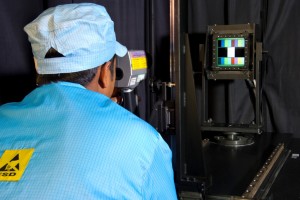
As for our global plans, keeping in mind the fact that most of our major partnerships are with US, UK and French market leaders, there is immense opportunity in the overseas market. US, UK and France are the biggest markets for aerospace industry, and we are continuing to expand our footprint in these markets. We are also in advanced stages of discussing JVs/ MoUs/ Contracts with leading players in aerospace &defence industry worldwide. Once they begin to materialise, they can completely change the landscape of the areas we operate in currently.






































